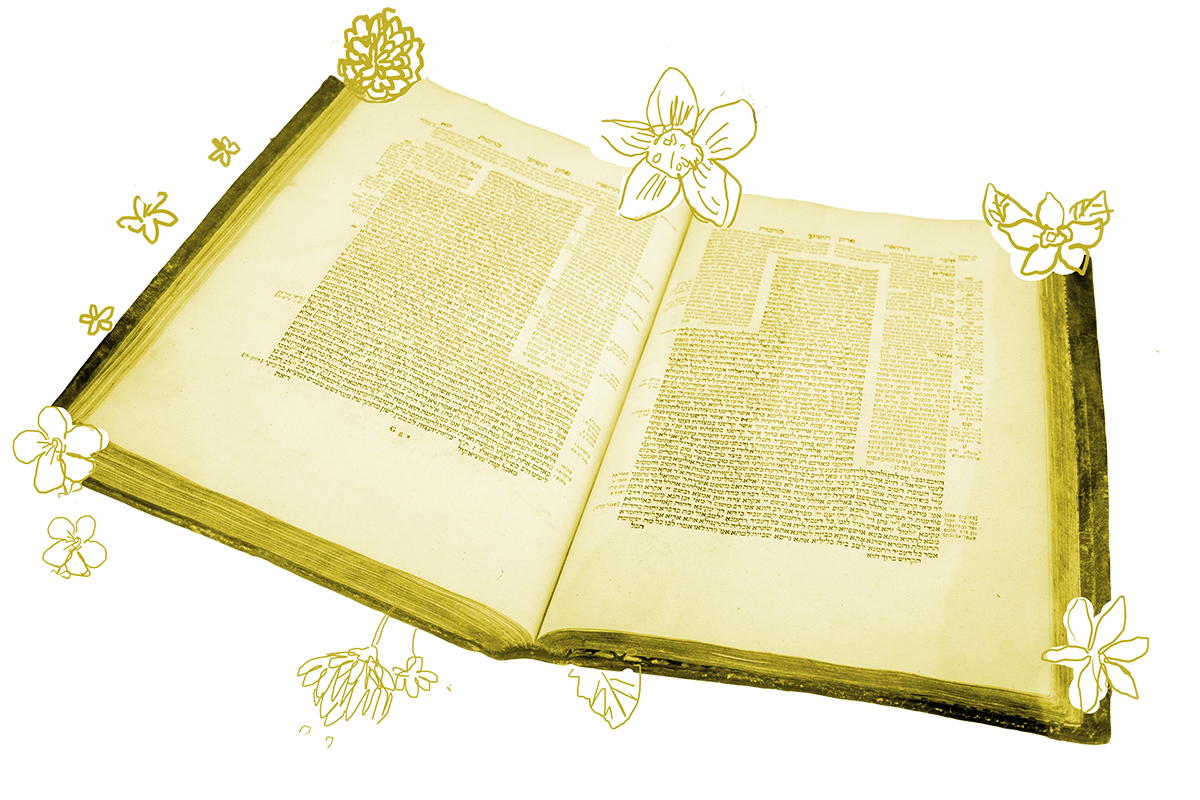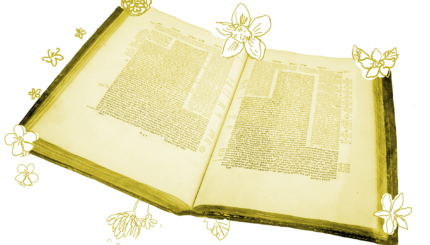A mishnah on today’s daf lists more foods prepared by non-Jews that a Jew is forbidden to consume:
Milk that was milked by a gentile and a Jew did not see him performing this action, and their bread and oil. Rabbi Yehuda HaNasi and his court permitted the oil of gentiles entirely.
In large measure, these are concerns of kashrut. But for today, let’s focus on the prohibition against eating bread baked by non-Jews. Basic bread — flour, salt and water — has no ingredients that are likely to be unkosher. In the case of bread, therefore, the sages’ concern is something else entirely, as the following story suggests:
Once Rabbi Yehuda HaNasi went out to the field, and a gentile brought before him a se’a of bread baked in a large baker’s oven. Rabbi Yehuda HaNasi said: How exquisite is this loaf of bread! What did the sages see that caused them to prohibit it? … It was prohibited due to the concern that Jews might befriend gentiles while breaking bread with them, which could lead to marriage with gentiles.
According to the sages, the real problem with eating bread prepared by gentiles is that accepting a loaf could lead to enjoying it together, which could lead to friendship, which could lead to intermarriage. In unpacking this text, we see that there are actually two discordant sentiments in this short anecdote: On the one hand, we have Rabbi Yehuda HaNasi (who spoke Greek and mixed frequently with non-Jews) engaging in conversation with a gentile baker who offers him a beautiful freshly baked loaf. On the other hand, we also encounter the sages’ conviction that befriending gentiles is dangerous because it could lead to intermarriage.
After some back and forth including an alternate reading of the story, the daf seems to come to the conclusion that gentile bread is definitely forbidden in town (where fraternization is likely) but perhaps permitted in the countryside (where the Jewish consumer is less likely to fall in love with the non-Jewish baker or one of their family members). The discussion concludes with this anecdote:
Aivu would bite and eat bread of gentiles at the boundaries of the fields. Rava said to the students in the study hall, and some say that it was Rav Nahman bar Yitzhak who said to them: Do not speak with Aivu, as he eats bread of Arameans in deliberate violation of a rabbinic decree.
In the manner of challenging students everywhere, and to the consternation of the rabbis, Aivu literally pushes the boundaries of this ruling by eating gentile bread at the place where the field ends and the city starts. He might have been on to something, however, because by the early medieval period, it’s likely (according to the Ritva, Tosafot and others) that the ban on eating gentile bread was not widely enforced.
The later leniency hinges on the rabbis differentiating between pat akum, bread baked in a gentile’s home oven, and pat palter, commercially baked bread. While pat akum is forbidden, pat palter becomes widely permitted. This may have been a practical measure: In the Middle Ages, many towns had large communal ovens and Jews living in towns together with gentiles had no choice but to bake bread together. Today, many commercially baked breads bear kosher certification, and for those who wish to be scrupulous about adhering to the parameters set out on our daf, it’s also possible to purchase pat Yisrael — bread for which Jews were involved in the baking process in some way, such as lighting the commercial oven.
That the rabbis forbade the consumption of non-Jewish bread not as a matter of kashrut but as a method of curbing interfaith fraternization is challenging to read. Even if it were possible for Jews to silo ourselves from interacting with non-Jews, I would argue that it isn’t desirable. As someone who works at an organization focused on combating antisemitism, I feel strongly that we cannot grow to greater tolerance and understanding if we avoid socializing with people who are different from us.
I think the way to read the rabbis here is within the context of our tractate as a whole. Tractate Avodah Zarah is all about setting boundaries between permitted and forbidden, and between Jews and gentiles. The rabbis draw lines that make sense to them in their time and place, and they also note that those boundaries are frequently blurred — as they were on today’s daf by Aivu and a few pages ago by Shmuel and Ablet. There’s no perfect formula for steering between the poles of assimilation and isolation. The best we can hope for is that messy and nuanced discussions like this one, which engage us emotionally as well as intellectually, will nudge us away from complacency and inspire us to keep striving for the right balance.
Read all of Avodah Zarah 35 on Sefaria.
This piece originally appeared in a My Jewish Learning Daf Yomi email newsletter sent on July 23, 2025. If you are interested in receiving the newsletter, sign up here.
With your help, My Jewish Learning can provide endless opportunities for learning, connection and discovery.



